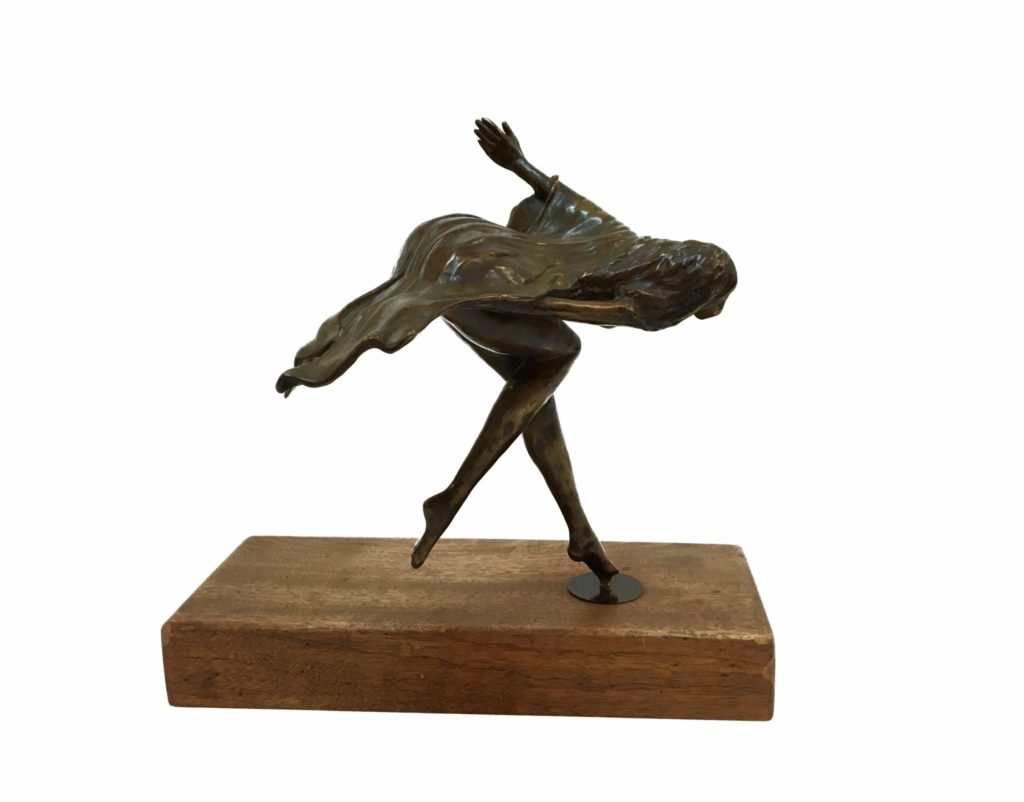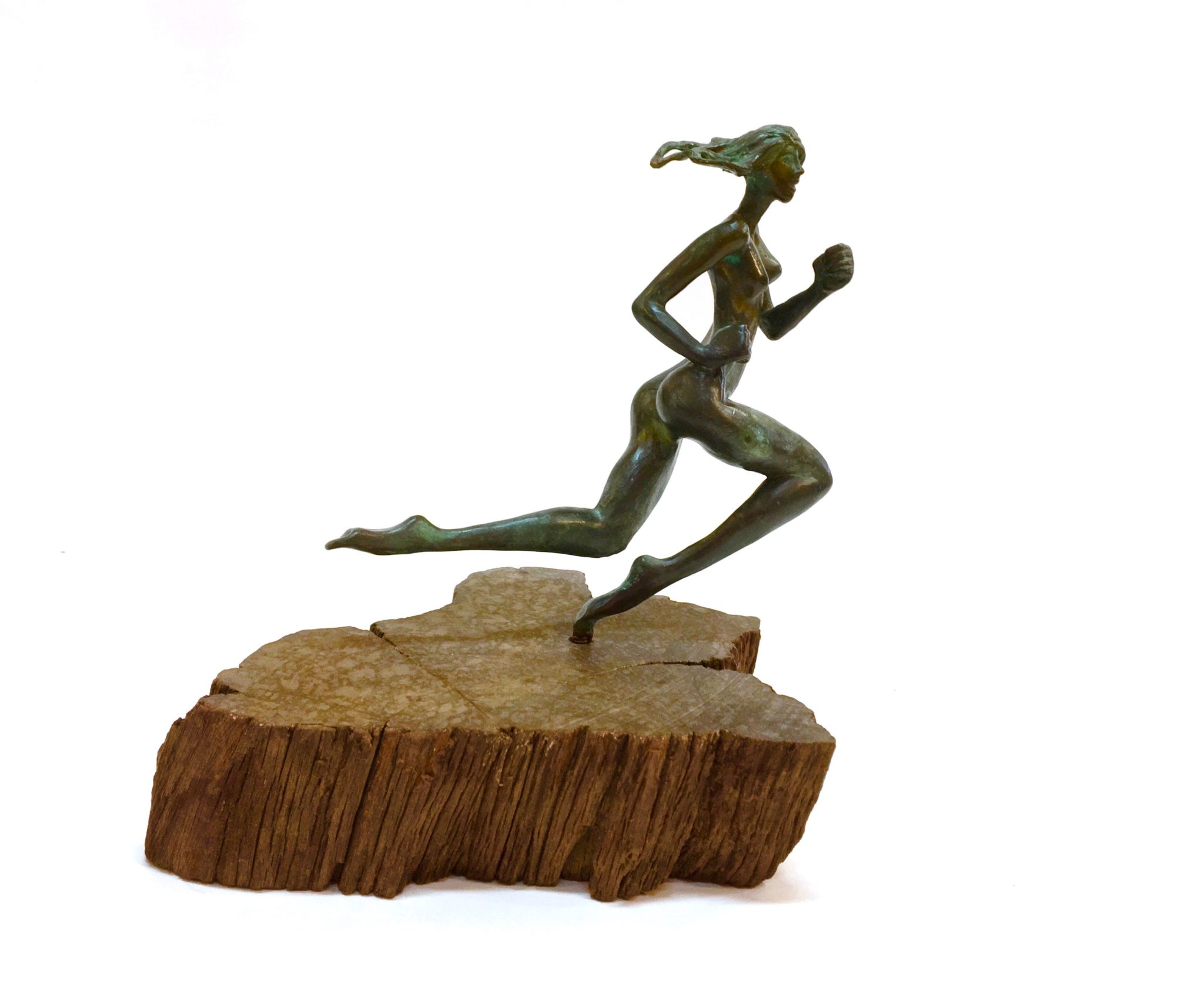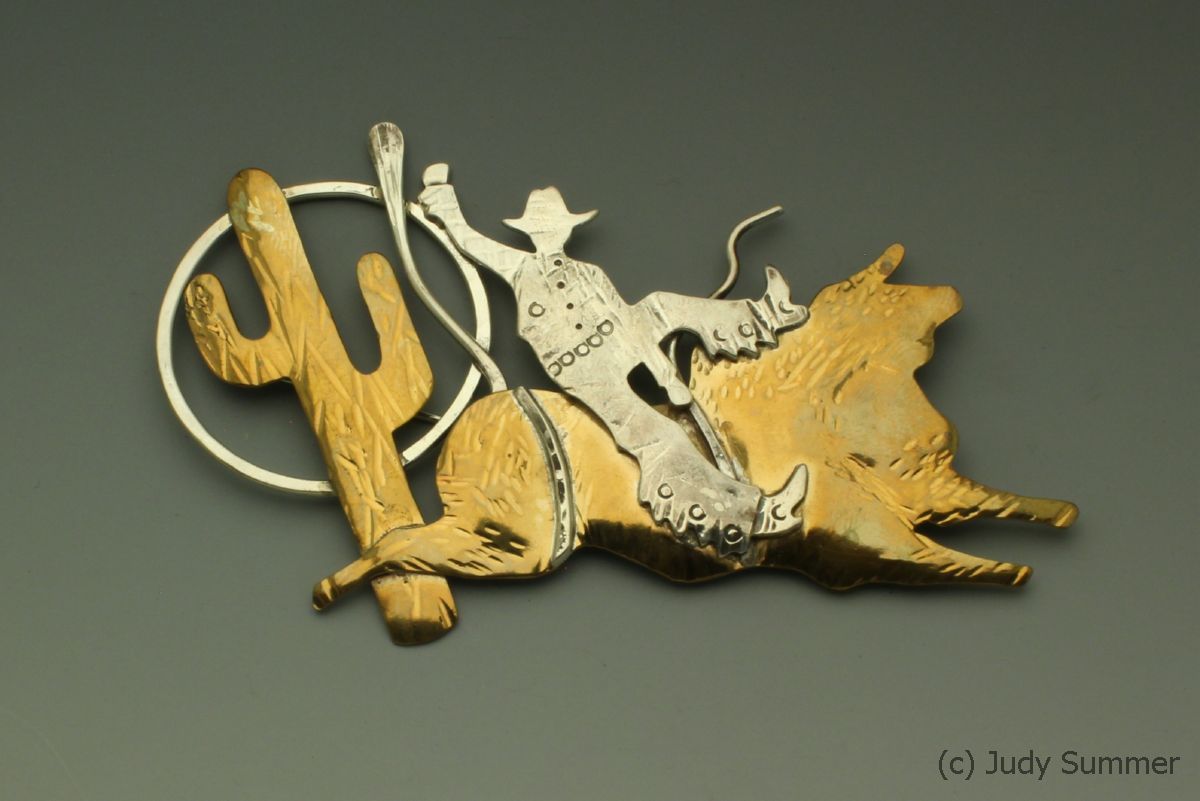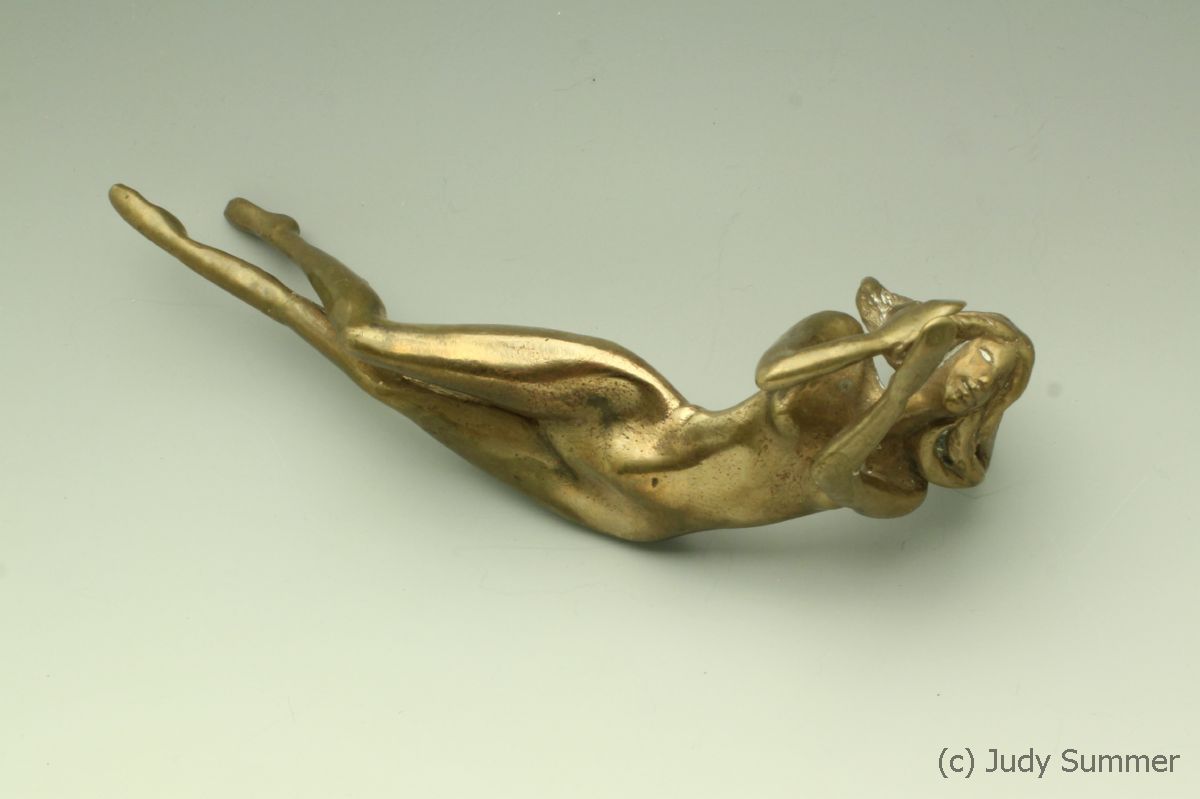Judy has sold work in different mediums and she recommends letting things start from a creative place and then watching what happens. “This creative place doesn’t have a name or location -- something magical happens to you if you sit down and you’re open to things coming to you,” she says. Some mediums are easier to translate than others. “When I work in clay my hands feel the connection to the medium and often the process takes its own direction."
Judy credits her success with her willingness to compromise. For new artists wishing to make a living with art, she recommends figuring out how long creating an artwork takes, whether somebody might want it in their home (or want to wear it), whether it might make somebody happy, and a suggested price point. “I started with what I wanted and figured out how I could adapt it to work for a larger population. One-of-a-kind work can follow once your art becomes more advanced and known.”


"Sculpture is like life, it must be viewed from all angles to be fully appreciated. Sculpture is totally honest. The three-dimensional form invites the viewer to find their own meanings if they wish.'
In decades of creating sculpture to wear, Judy has found a connection between her larger pieces and smaller, more personal works of jewelery. "Choosing the stones is an exciting part of the process. I love the connection with the wonderful stonecutting artists whose work I use and I am in awe of the materials that nature provides. The result can become personal talismans. The wearer joins me in becoming part of a communication between artist and nature.”


Fun pins capture moments in Judy's life, from shop-till-you-drop to motorcycle riding with bullriders.

Sensitive female figures in strong bronze sculptures

Early Years
Judy grew up in lower Manhattan, where her window framed New York’s colorful and bustling immigrant population. Judy's creativity grew from childhood asthma. Frequently sick, and stuck in her family’s ghetto apartment in NYC she saw potential invisible to others. She painted or transformed toilet paper and cereal boxes into paper dolls, sewed clothes with her mother, and drew, drew, drew.
When applying to the prestigious Laguardia School of Music and Art at age 12, Judy took a manila business portfolio, cut it open, and pasted samples of her work into it. She didn’t listen to neighbors saying it was impossible to pass the admission test. “I knew I wouldn’t get in if I didn’t try. Kids were showing up with professional art portfolios with handles, and I had never seen those before,” she laughs, noting she had also never seen an oil painting off a wall.
She got into Laguardia, and continued studying art and early education in college
After college, Judy and her husband moved to California to take a teaching job. Her 1st grade students had migrant-worker parents, few spoke good English, and none knew basic numbers and alphabets. Judy says, “It brings tears to remember where we started, and how I loved the challenge and fun of seeing those kids light up with energy when they learned. Every night I made creative materials at home so every kid could succeed -- pictures helped immensely.”
On To California
After college, Judy and her husband moved to California to take a teaching job. Her 1st grade students had migrant-worker parents, few spoke good English, and none knew basic numbers and alphabets. Judy says, “It brings tears to remember where we started, and how I loved the challenge and fun of seeing those kids light up with energy when they learned. Every night I made creative materials at home so every kid could succeed -- pictures helped immensely.”
Judy bought two card tables at the Salvation Army, covered them with a fabric drape, and displayed her class sculptures at a local venue for upcoming artists, Joe’s Lot. Joe’s was located near the professional galleries on Melrose Ave. and the crowds would treasure hunt at Joe’s. “People liked my sculptures and I made my first sale,” Judy says.
After her divorce, Judy had to ramp-up her sales to support her children. She faced a dilemna: how could she keep her artistic integrity but also create art targeted to buyers?
She began casting jewelry, which she considers “small sculptures to wear”. She sold her jewelry with box frames so buyers could display their jewelry as art when not worn. Judy also created and sold sculpture, and opened up a studio to teach sculpture, but she found herself struggling financially. She says, “I was thinking I need to display in a gallery, then realized … oh, I could make the studio into a gallery.”
She opened a 300 square foot gallery, featuring her work and the artwork of local artists. Through her gallery, she networked and met many artists and gallery owners.
Success in Park CIty
Suddenly Judy found herself participating in prestigious art shows at galleries. “Then some publications picked up my story and I was launched into the bigger art world,” she says.
On a ski trip to Park City, Utah, she fell in love with the mountain lifestyle, the opposite of the urban-jungle of California. She relocated with her kids, and began a transformation.
Judy learned to fabricate jewelry, which became her main focus for the next twenty-five years.
Along the way she started playing in other mediums, such as papermaking and polymer clay. That slowly developed into using the brightly colored clay to create jewelry and sculpture. "Creating patterns in polymer clay is in itself fun. Then, I became involved using clay surface designs to enhance the form of sculpture."
The polymer clay work gave birth to her unique signature horses.
Current Work
"The horse connects my soul to my art, where I hope to portray a feeling of beauty, grace and freedom. Horses are a bridge. In the wild they come and go as they please, and even in the confines of our pastures they retain the spirit of the wild. It is a miracle that this huge animal is teachable, emotional and affectionate. This is what inspired me to use the horse as subject matter for my current work."
Judy has met and adapted to many challenges in her life. Her diminishing vision is causing her to push her creative boundaries. Although she is continuing with her current work, she is always peeking around the corner to see what is coming next.